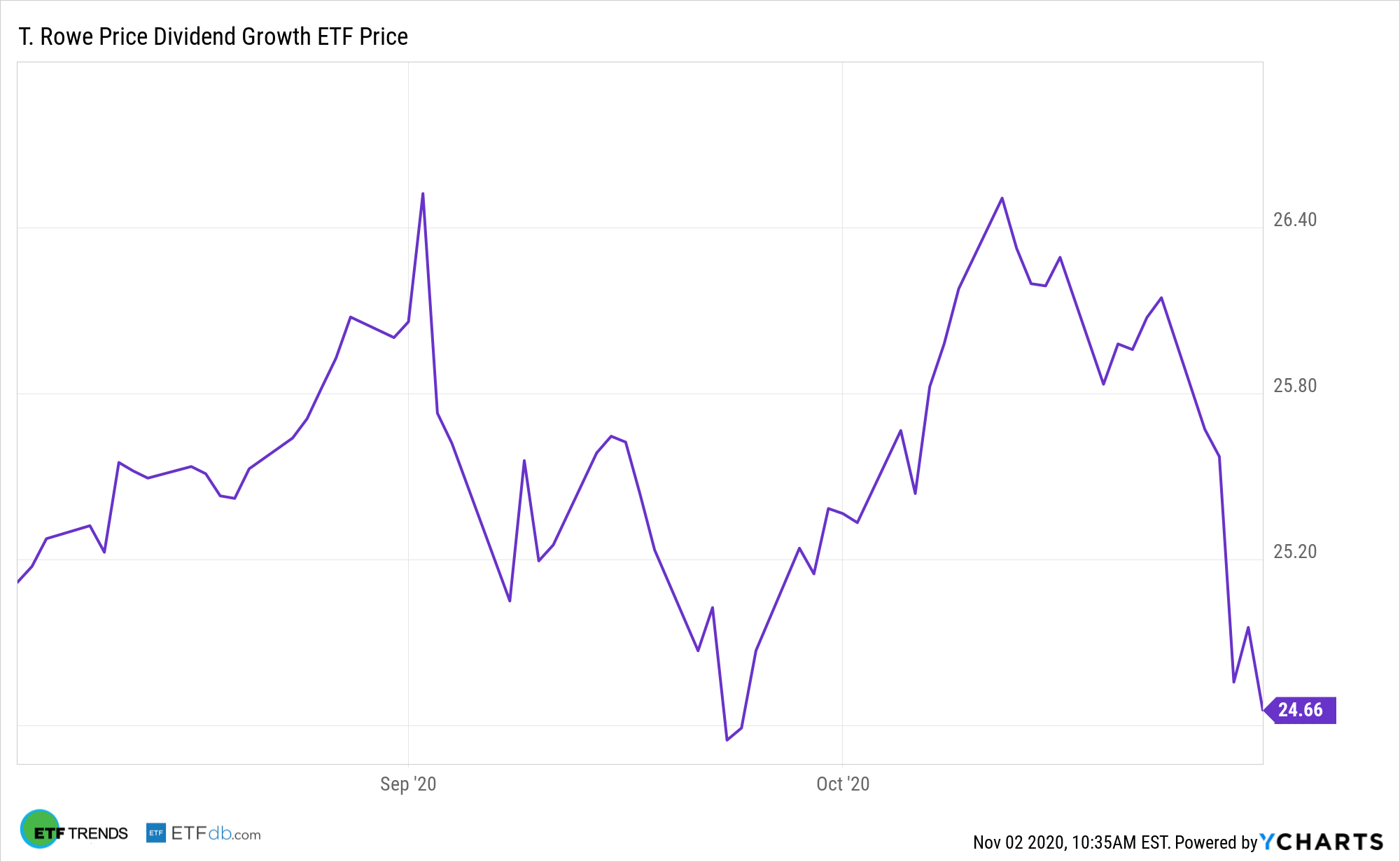Broadly speaking, actively managed exchange traded funds carry higher fees than their passively managed counterparts.
While fees aren’t the sole determinant of investor outcomes, advisors and investors typically gravitate toward cost-effective products. However, there are other ways for issuers to lower investors, namely eliminating trading commissions, which can provide a significant boost to investors of all stripes.
T. Rowe Price is doing just that, announcing that it’s actively managed ETFs are migrating to some commission-free platforms.
Last week, the fund issuer said its “four newly debuted active equity exchange-traded funds (ETFs) commission free on several major custodial platforms, including E*TRADE, Fidelity Brokerage Platform, BNY Mellon | Pershing FundVest ETF Platform, Schwab ETF Platform, and Vanguard Brokerage Platform.”
Some market observers believe that investors need to go beyond relying on past performance or buying the cheapest ETF. They are now incorporating a more forensic approach that could dig deeper into company fundamentals.
T. Rowe Price Slashing Investment Costs
“T. Rowe Price launched four active equity ETFs on August 5, 2020: T. Rowe Price Blue Chip Growth ETF (Ticker: TCHP), T. Rowe Price Dividend Growth ETF (Ticker: TDVG), T. Rowe Price Equity Income ETF(Ticker: TEQI), and T. Rowe Price Growth Stock ETF (Ticker: TGRW),” according to the issuer. “Each is constructed similarly to a corresponding investment strategy that has served T. Rowe Price clients for decades and is characterized by rigorous securities research, risk awareness, and independent investment decision making by the same experienced portfolio manager as its mutual fund counterpart. The funds offer typical ETF features, including tax efficiency, intraday trading, and real-time market determined pricing.”
As just one example, TDVG’s emphasis on dividend growers is particularly relevant in today’s market environment. Dividend-growing companies are also high quality names. Steady dividend payouts have also helped produce improved risked-adjusted returns over time.

The high-quality focus may also help dividend growers outperform or do less poorly than the broader markets during weaker periods.
Dividends have added significantly to returns over time, contributing approximately 32% of the S&P 500’s total return since 1960. During the return-challenged 1970s, dividends made up nearly three-quarters of S&P 500 returns – while investors earned a cumulative total return of 77% from the S&P 500 in that decade, 60% of that 77% was from dividends.
TDVG seeks dividend income and long-term capital growth by investing the majority of its assets in the common stocks of dividend-paying companies expected to increase their dividends over time.
For more on active strategies, visit our Active ETFs Channel.
The opinions and forecasts expressed herein are solely those of Tom Lydon, and may not actually come to pass. Information on this site should not be used or construed as an offer to sell, a solicitation of an offer to buy, or a recommendation for any product.








